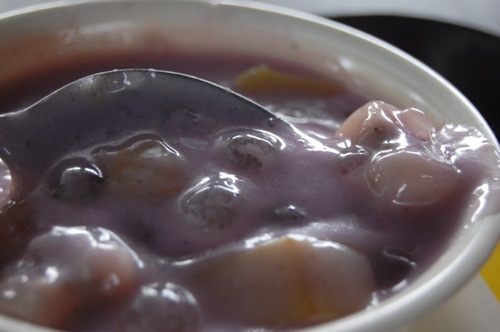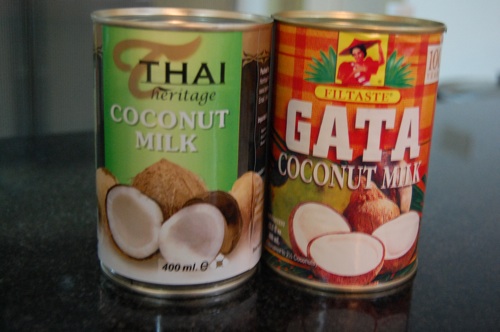In my Cebu hometown, Binignit is “traditionally eaten as a snack on Good Friday: Binignit originated from Cebu province. Binignit is a warm root crop and fruit stew consisting of a thick mixture of tubers such as taro, purple yam, sweet potato, as well as bananas, jackfruit, sago, tapioca pearls and sugar, cooked in coconut milk and thickened with milled glutinous rice.” How I miss the Binignit.
 When I moved to Manila during college, I never got to taste Binignit. Too bad I never took the time to learn how to prepare Binignit. I never knew how to make the Tagalog version, the ginataan until I became a mother. Even when I took up Principles in Food Preparation in UP Diliman under the late Matilde P. Guzman and learned the technique of Extracting Coconut Cream and Coconut Milk, I still didn’t take time to cook a batch of this yummy filipino merienda fare.
When I moved to Manila during college, I never got to taste Binignit. Too bad I never took the time to learn how to prepare Binignit. I never knew how to make the Tagalog version, the ginataan until I became a mother. Even when I took up Principles in Food Preparation in UP Diliman under the late Matilde P. Guzman and learned the technique of Extracting Coconut Cream and Coconut Milk, I still didn’t take time to cook a batch of this yummy filipino merienda fare.
Anyway, by the time I became a mother, I decided to cook it for my kids. Here is my recipe for Ginataan but it is not the original Binignit…One day I will prepare the Cebuano Binignit that includes Landang.
Ingredients
1 coconut, grated
1/4 kilo ube or gabi, diced ( I don’t really like a lot of tubers in my ginataan so I just add a little of each)
1/4 kilo kamote, diced
5 saba bananas, sliced crosswise
8 sections of nangka or jackfruit in strip
3 tablespoons sago (kids love more sago in their ginataan)
1 cup sugar or add more depending your sweet tooth
Optional ingredients include tapioca balls which I didn’t add because of my preference to saba, langka, sago and kamote in my ginataan.
Directions
1. Prepare the coconut coconut cream and milk following instructions from Extracting Coconut Cream and Coconut Milk. (For those overseas, you can buy a can of coconut milk and coconut cream at your local grocery similar to the photo below)

Set aside 1 cup of thick coconut milk (first press) and 2 cups of coconut milk.
2. Boil coconut milk. Add sago, gabi or ube.
3. Cook until half-done.
4. Add the bananas, camote and nangka.
5. Blend in sugar.
6. Pour thick coconut cream (first press) before removing.
7. Cook until done.
I like my ginataan to have thick yet runny consistency.

6 thoughts on “Binignit, the Cebuano version of the Ginataan”